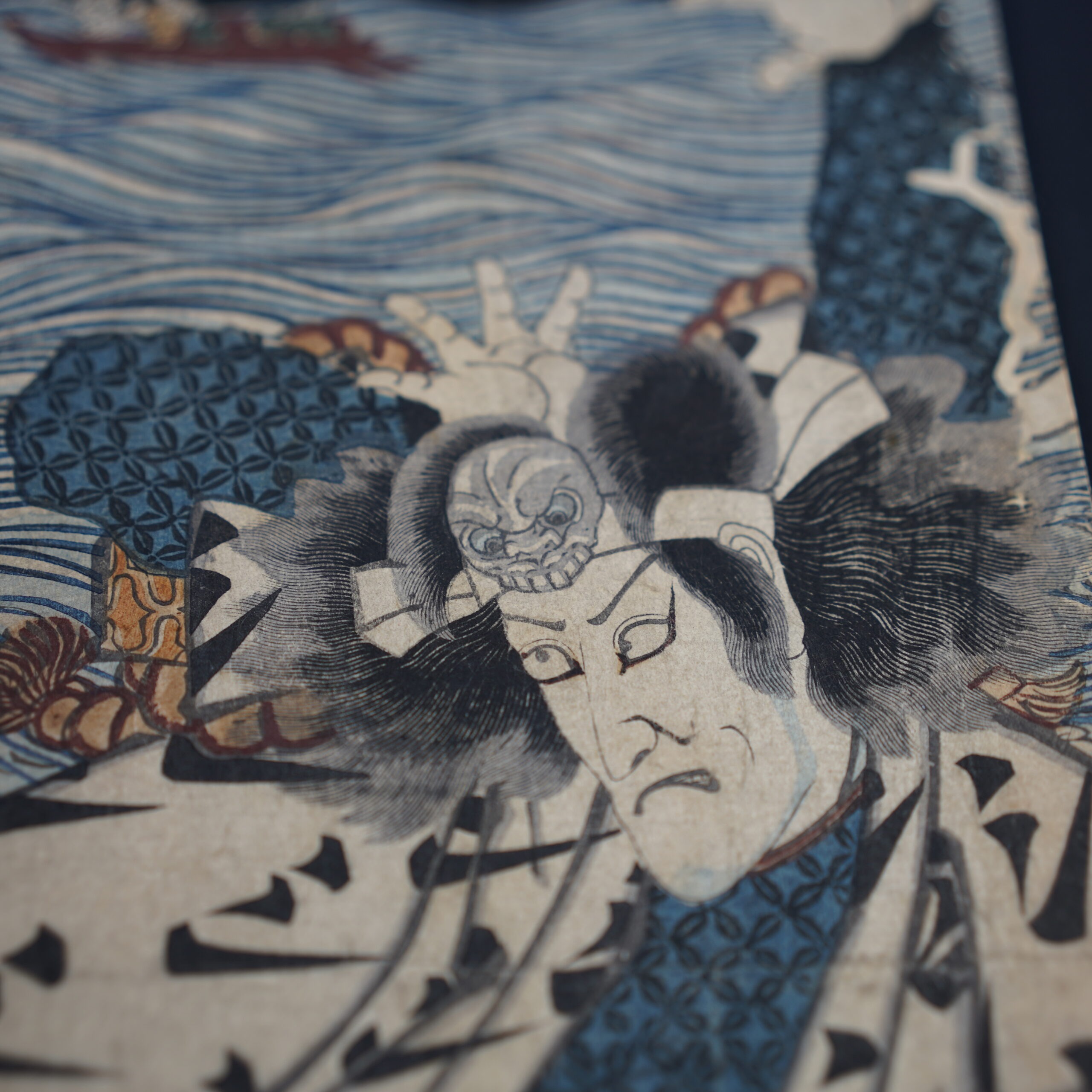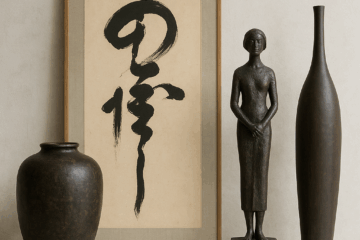Suikoden is the Japanese version of a great Chinese literary classic, an adventure novel about 108 outlaws who come together to defy corruption and defend the weak.
In Japan, this work was adopted and reinterpreted from the Edo period onwards, becoming a veritable cultural phenomenon. Rebels turned heroes, warriors with ambiguous virtues, figures of loyalty as much as of indiscipline: Suikoden offered the Japanese public a powerful imagination, nourished by action, justice and heroic destiny.
This universe was naturally destined to meet Japanese printmaking. Edo artists, fascinated by the dramatic force of these stories, found in them the ideal material to create images charged with energy, where theatrical postures, opulent fabrics and tormented landscapes immediately evoke the great scenes of kabuki.
Suikoden thus became a major theme of musha-e, warrior prints, paving the way for some of the most famous works of ukiyo-e.
Suikoden in art: the Kogeiya approach
At Kogeiya, Kunisada's print dedicated to the hero Sagami Gorō perfectly illustrates this encounter between literature, theater and visual art. Kunisada captures his character in a tense, almost sculptural pose, borrowed from kabuki gestures: a planted body, a burning gaze, like a freeze-frame in the middle of a fight. The kimono's dynamic, chiseled motifs accentuate the warrior's nobility, while the marine background adds a dramatic intensity typical of heroic works of the period.
This 1828 Oban print, signed and meticulously detailed, is much more than an illustration. It's a piece of visual history, a trace of the era when Edo folk art seized on legends to turn them into graphic icons.
In presenting it, Kogeiya highlights the narrative dimension of Suikoden as much as its importance in Japanese visual culture, reminding us that a print can be a setting, a symbol and a witness to a culture in full bloom.
Why are these prints still fascinating today?
The Suikoden prints are seductive because they concentrate in a single image all the tension of a heroic tale: the moment suspended before the assault, the fever of a duel, solitary courage in the face of storm. They speak to the imagination as much as to the eye, and convey a form of universal heroism that spans the centuries.
We also see the meeting of two worlds: the Chinese literary universe and Japanese aesthetics fused in a composition that blends luxurious textiles, theatrical gestures, restrained violence and visual poetry.
For collectors and lovers of Japanese art, these works embody a unique opportunity: to hang a fragment of legend in your home, a moment of epic frozen on paper, sublimated by the masters of ukiyo-e.
A signed, well-preserved antique print, like the one presented by Luc Hédin at Kogeiya, is not just a decorative object: it's a concentrate of culture, narrative and history, capable of bringing an immediately recognizable depth to a contemporary interior.
Don't hesitate to contact me if you'd like a print recounting the suikoden.






